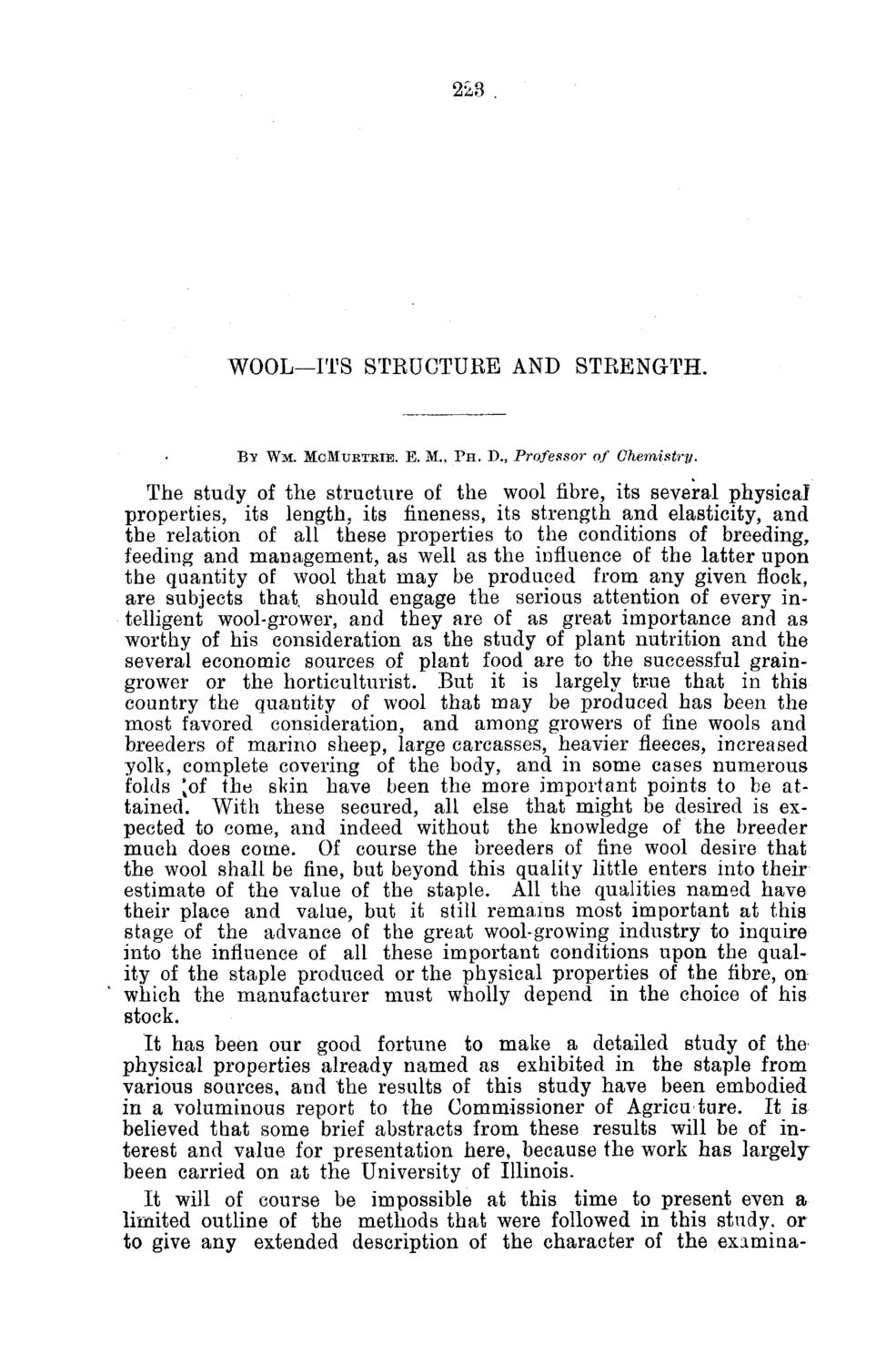| |
| |
Caption: Board of Trustees Minutes - 1886
This is a reduced-resolution page image for fast online browsing.

EXTRACTED TEXT FROM PAGE:
2z3 . WOOL—ITS STRUCTURE AND STRENGTH. B Y W M . M C M U E T K I E . E. M., P H . D., Professor of Chemistry. The study of the structure of the wool fibre, its several physical properties, its length, its fineness, its strength and elasticity, and the relation of all these properties to the conditions of breeding, feeding and management, as well as the influence of the latter upon the quantity of wool that may be produced from any given flock, are subjects that, should engage the serious attention of every intelligent wool-grower, and they are of as great importance and as worthy of his consideration as the study of plant nutrition and the several economic sources of plant food are to the successful graingrower or the horticulturist. But it is largely true that in this country the quantity of wool that may be produced has been the most favored consideration, and among growers of fine wools and breeders of marino sheep, large carcasses, heavier fleeces, increased yolk, complete covering of the body, and in some cases numerous folds ^of the skin have been the more important points to be attained. With these secured, all else that might be desired is expected to come, and indeed without the knowledge of the breeder much does come. Of course the breeders of fine wool desire that the wool shall be fine, but beyond this quality little enters into their estimate of the value of the staple. All the qualities named have their place and value, but it still remains most important at this stage of the advance of the great wool-growing industry to inquire into the influence of all these important conditions upon the quality of the staple produced or the physical properties of the fibre, on which the manufacturer must wholly depend in the choice of his stock. It has been our good fortune to make a detailed study of the physical properties already named as exhibited in the staple from various sources, and the results of this study have been embodied in a voluminous report to the Commissioner of Agricu ture. It is believed that some brief abstracts from these results will be of interest and value for presentation here, because the work has largely been carried on at the University of Illinois. It will of course be impossible at this time to present even a limited outline of the methods that were followed in this study, or to give any extended description of the character of the examina-
| |